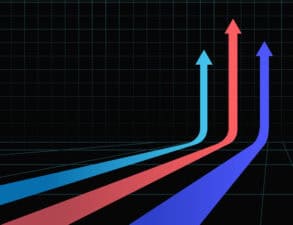Some dividend stocks are shares you can sit on for passive income. Others are not, but it doesn’t mean they are bad investments. It could mean that investors need to keep a closer watch on these dividend stocks to aim for outsized total returns. Ultimately, it’d be better for investors to think of these types of dividend stocks as ideas that have impressive price appreciation potential while paying dividends.
Energy stocks that are impacted by volatile energy prices
The bottom lines of energy stocks, specifically, oil and gas producers, are impacted by unpredictable and volatile energy prices. When energy prices are high, these energy stocks book incredible profits. When energy prices are low, they could post significant losses.
Right now, energy prices are high. In this favourable operating environment, oil-weighted producers like Parex Resources (TSX:PXT) have been reporting wonderful results. The company has a production weight of about 96% in oil.
Parex Resources will be reporting its second-quarter (Q2) results soon. In Q1, it realized an average Brent oil price of US$97.90 per barrel. The Brent oil price is even higher now. At writing, it stands at about US$99 per barrel.
Consequently, it reported record quarterly funds from operations of $205.5 million, up 64% versus Q1 2021. Its payout ratio was less than 9% of earnings for the quarter. The company began paying a quarterly dividend in September 2021 and has doubled its dividend since because commodity prices have skyrocketed. As a result, it also only trades at a super-cheap valuation of about three times cash flow.
The energy company maintains a clean balance sheet with little debt. Therefore, it has had the resources to buy back shares over the last few years. For example, in the trailing 12 months, 75% of its free cash flow went to share repurchases and 18% went to dividend payments. And it still had $22.7 million leftover for other purposes.
At $23.84 per share, it yields 4.2% and has 72% upside potential over the next 12 months, according to the consensus analyst view.
Cyclical stocks aren’t for passive income
Cyclical stocks like Aecon (TSX:ARE) definitely require active investing. The construction and engineering company’s earnings dances to its own rhythm unlike its bigger peers. That is, its earnings go up and down in cycles.
Currently, it’s in a down cycle. Investors witnessed the stock fall more than 13% in a single day after reporting its Q2 results. Just last year, the stock jumped over 10% in one day after reporting quarterly earnings results.
This is the type of stock to buy when it’s low and sell when it’s high. Meanwhile, the dividend stock pays a very generous dividend yield of close to 6.7%. Between Aecon’s earnings and stable balance sheet, it has the resources to maintain its dividend. (And it has indeed maintained or increased its dividends every year since 2008.) However, management could decide that its yield is too high and that it has better uses for its capital (such as buying back its shares at bargain prices) and cut its dividend.
So, investors should consider the dividend stock as a total-return investment instead of a passive-income investment. At $11.10 per share, it has 66% upside potential over the next 12 months.
 Spring Sale
Spring Sale







